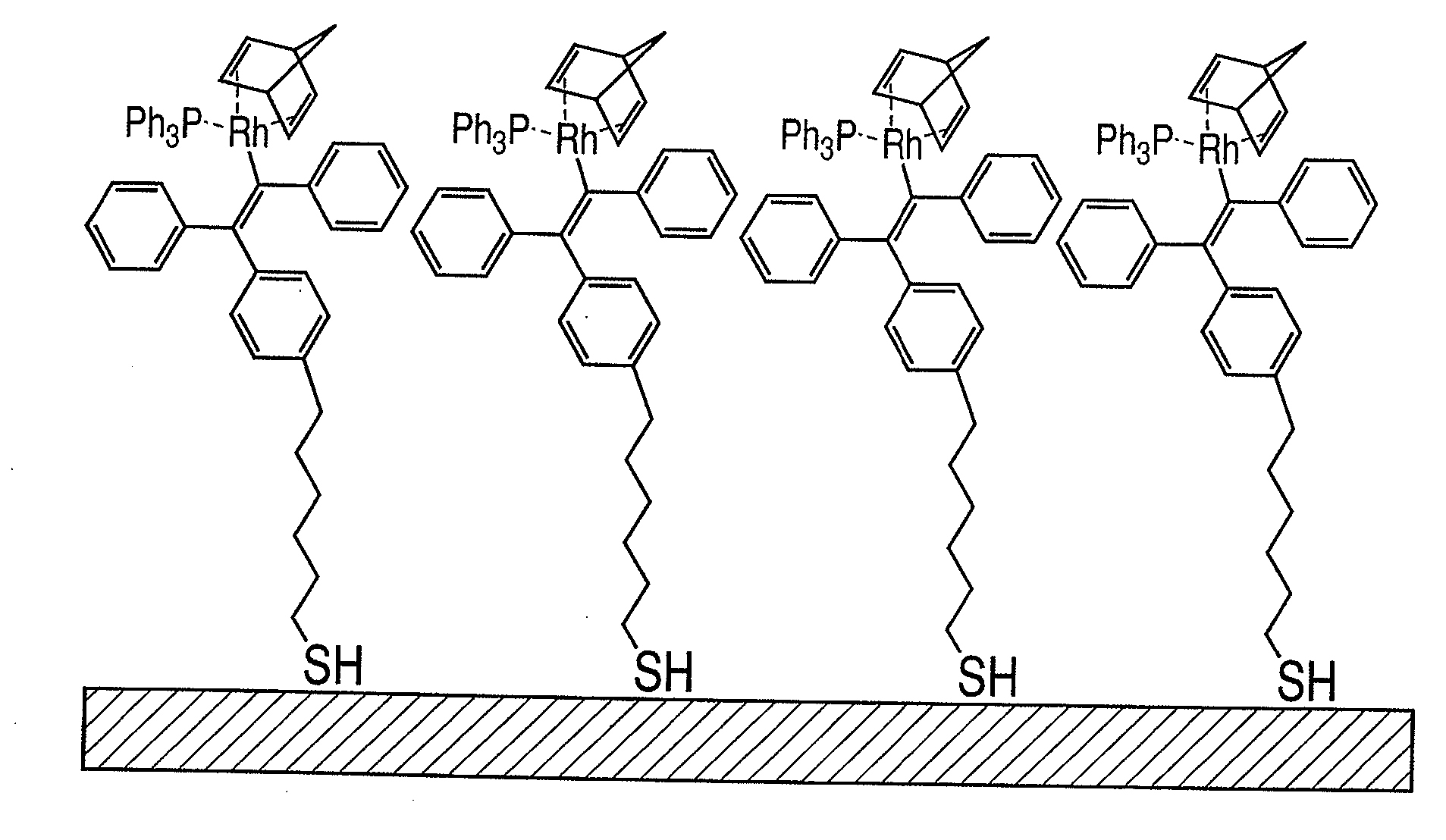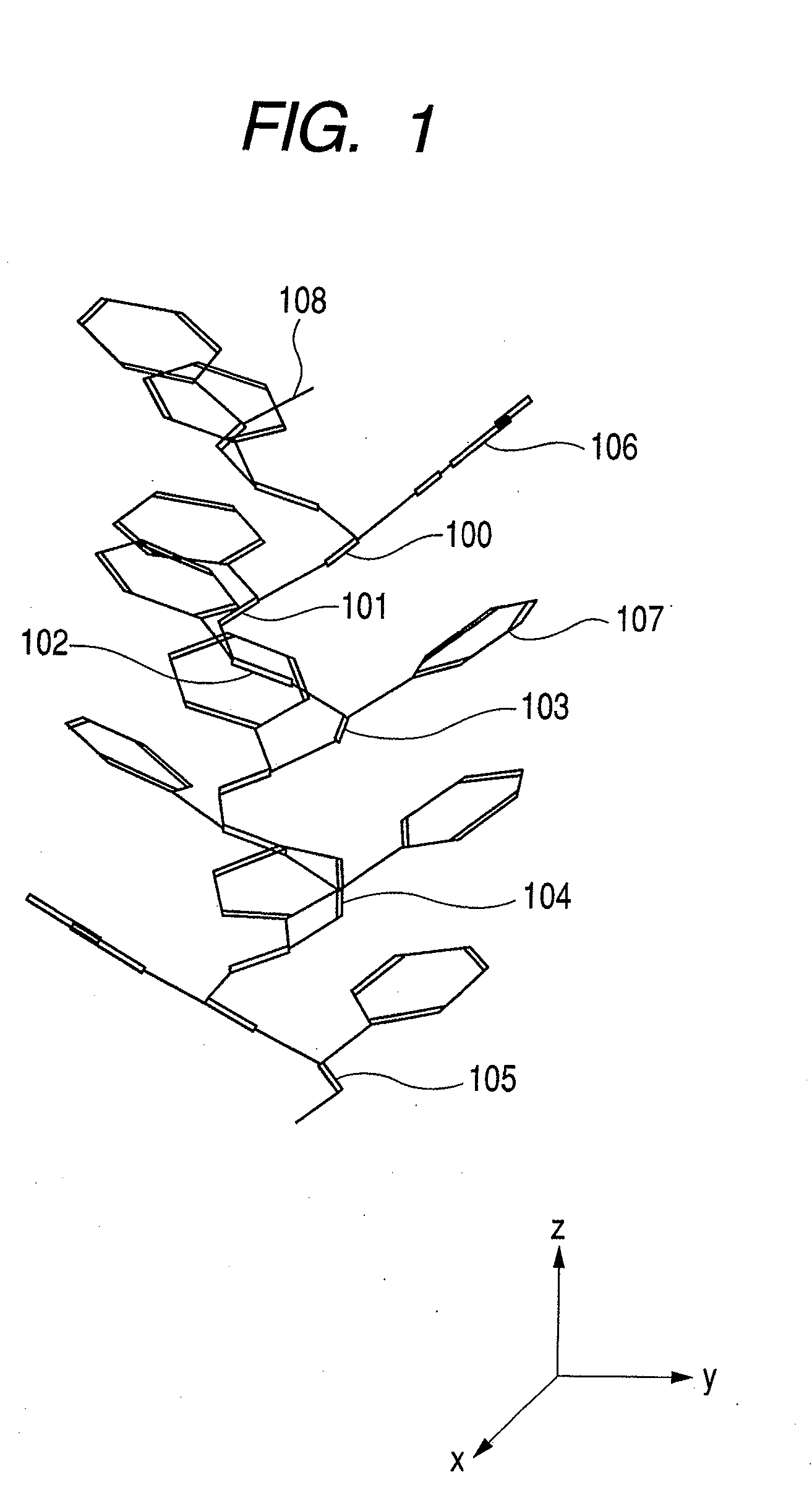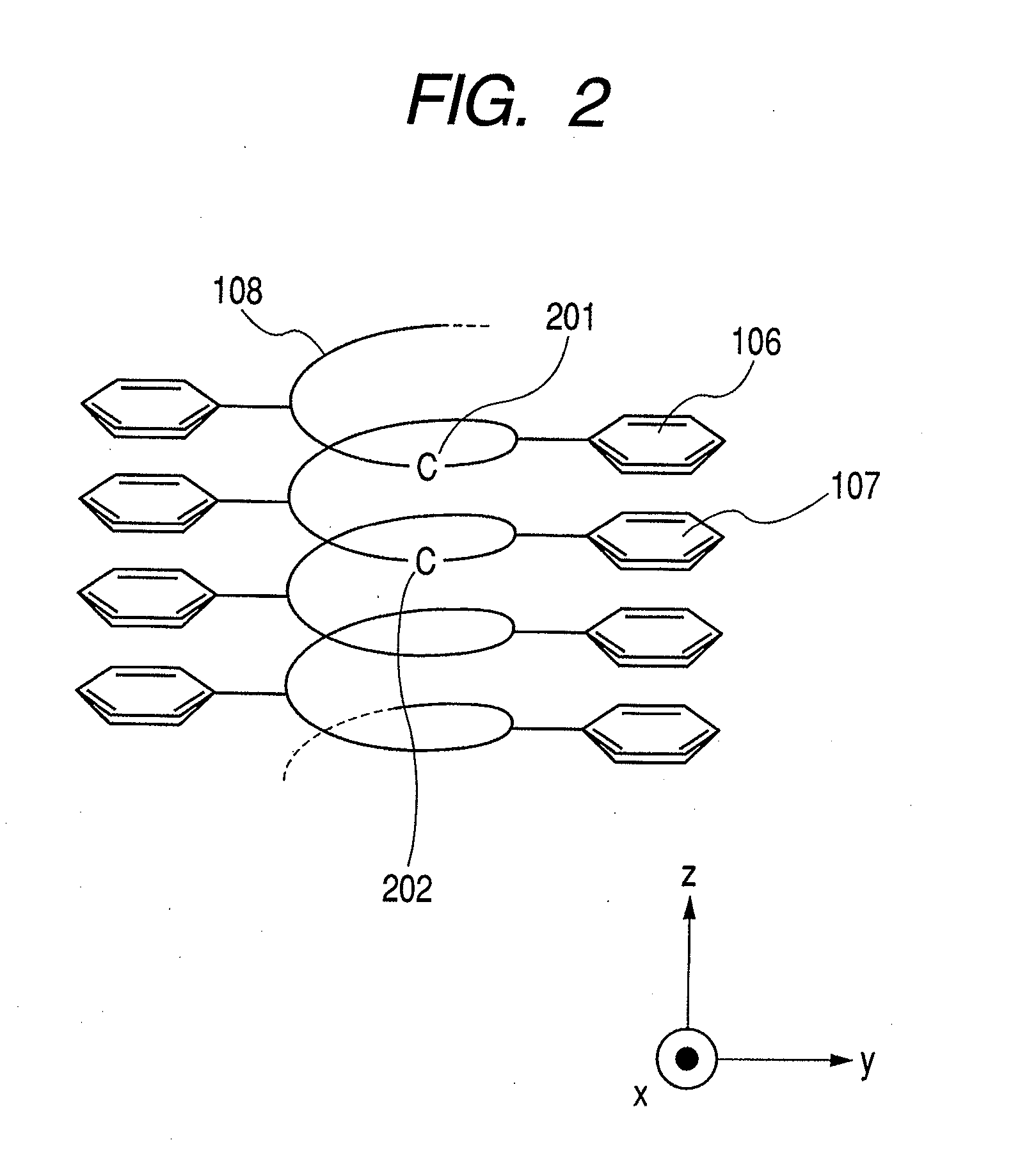Helical substituted polyacetylene structure, method for producing the same, device structure, ion transport film and gas separation film
a technology of helical substituted polyacetylene and polyacetylene, which is applied in the direction of cellulosic plastic layered products, separation processes, paper/cardboard containers, etc., can solve the problems of reducing the mobility of organic semiconductors, improving the operation speed of devices including organic semiconductors, etc., and achieves reduced migration length of charge transport carriers, high efficiency, and reduced migration length
- Summary
- Abstract
- Description
- Claims
- Application Information
AI Technical Summary
Benefits of technology
Problems solved by technology
Method used
Image
Examples
example 1
[0095]Present Example is an example of a fundamental structure of a functional polymer film in which poly(p-2-ethylhexylamidophenylacetylene) is used.
[0096](Growth Polymerization from Basal Plate)
[0097]In a test tube sealed after pressure reduction and replacement of the air in the test tube with nitrogen, 0.01 mol of rhodium (norbornadiene) chloride dimer and 4 mL of toluene as a solvent are placed, stirred for about 10 minutes, and then 5 mL of a toluene solution of 1-mercaptooctylphenyl-1′,2-diphenylvinyllithium, represented by the following formula 2a, having a concentration of 1×10−3 mol / L is poured into the test tube. Thereafter, 0.1 mol of triphenylphosphine and 1 mL of toluene are poured into the test tube, and stirred at 0° C. for 2 hours to yield a toluene solution of [rhodium(norbornadiene)(1-mercaptohexylphenyl-1′,2-diphenylvinyl)(triphenylphosphine)] complex represented by the following formula 2b.
[0098]A test tube in which a gold basal plate is placed is sealed after r...
example 2
Block Polymer
[0100]In a test tube sealed after pressure reduction and replacement of the air in the test tube with nitrogen, 0.1 mol of triphenylphosphine, 0.01 mol of rhodium (norbornadiene) chloride dimer, 5 mL of toluene as a solvent, and then 5 mL of a toluene solution of 1,1′,2-triphenylvinyllithium, having a concentration of 1×10−3 mol / L are poured into the test tube. Thereafter, the content of the test tube is stirred at 0° C. for 2 hours to yield a toluene solution of [rhodium(norbornadiene)(1,1′,2-triphenylvinyl)(triphenylphosphine)] complex.
[0101]In a test tube sealed after pressure reduction and replacement of the air in the test tube with nitrogen, 10 mL of toluene solution of the [rhodium(norbornadiene)(1,1′,2-triphenylvinyl)(triphenylphosphine)] complex having a concentration of 1×10−3 mol / L is placed, and 10 mL of a toluene solution of p-2-ethylhexylamidophenylacetylene having a concentration of 0.5 mol / L is added in the test tube, and then stirred at 20° C. for 1 hou...
example 3
Production of an Ion-Containing Film by a Growth-on-Basal-Plate Method
[0111]By using as a monomer, p-butyltriethyleneoxidephenylacetylene represented by formula 5, a polymer film is prepared on a gold basal plate in the same manner as in above-described Example 1. The poly(p-butyltriethyleneoxidephenylacetylene) film grown on the gold basal plate is mixed with a solution of lithium perchlorate in 10% equivalent amount relative to the repeating unit and is allowed to stand still for 2 hours. Thereafter, the solution remaining on the basal plate is removed, and the basal plate is washed with toluene and then dried to yield a lithium salt-containing poly(p-butyltriethyleneoxidephenylacetylene) film. The inclination angle between the main helical axis of the polyacetylene and the surface of the substrate is 60 degrees or more.
PUM
| Property | Measurement | Unit |
|---|---|---|
| Angle | aaaaa | aaaaa |
| Angle | aaaaa | aaaaa |
| Ion transport number | aaaaa | aaaaa |
Abstract
Description
Claims
Application Information
 Login to View More
Login to View More - R&D
- Intellectual Property
- Life Sciences
- Materials
- Tech Scout
- Unparalleled Data Quality
- Higher Quality Content
- 60% Fewer Hallucinations
Browse by: Latest US Patents, China's latest patents, Technical Efficacy Thesaurus, Application Domain, Technology Topic, Popular Technical Reports.
© 2025 PatSnap. All rights reserved.Legal|Privacy policy|Modern Slavery Act Transparency Statement|Sitemap|About US| Contact US: help@patsnap.com



